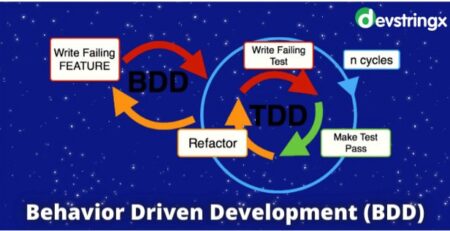How Automated Software Testing Can Benefit Your Company? – DS
Crafting a product demands more than effort – it requires attention to the details, like testing. Even when developing on a budget, companies should prioritize quality assurance through tests and assessments to ensure their products meet industry standards. Devoting resources towards running effective evaluations is essential for driving successful product development outcomes!
For more reliable and efficient software development, manual testing should avoid whenever possible. The best way to save time while still ensuring high-quality results is to automate the process. Automation allows for a better understanding of an application’s behavior as well as improved tools that can give even greater insight into potential issues in future builds or updates.
Automated Software Testing Benefits
Automated Software Testing (AST) can be a major benefit to companies that want to ensure their products are performing at the highest level. With automated testing, you can reduce your test coverage time and costs significantly by eliminating manual tasks. It also allows for more consistent results across multiple builds – reducing human error and providing more accurate feedback on performance. The Benefits are:
1) The Team’s Time is Saved
Automating tests can save the team a considerable amount of time as they no longer have to manually run each and every test case. This allows them to focus on other important tasks such as developing new features, improving existing ones, or attending to customer feedback.
2) Improved Accuracy
Automated software testing tools can generate results that are more accurate than manual testing due to the lack of human errors in performing the tests.
3) Increased Test Coverage
With automated testing, it’s possible for teams to perform tests on an application that would be difficult or impossible with manual tests. This gives them access to greater insight into their application’s quality and performance. It ensures that they are always working at optimal levels while minimizing potential risks.
4) Reduced Cost
Automated software testing is more cost-effective than manual tests, as the initial setup of automation requires a much smaller investment compared to manual labor. This means that companies can save on resources while still ensuring quality results.
5) Faster Feedback Cycle
Automated tests are able to be run much faster than manual ones, allowing teams to quickly identify and fix any issues before they become bigger problems. This helps them keep their products up-to-date and running optimally at all times.
6) Better Insights
Automation software testing can provide teams with better insights into the behavior of their application. This allows for more accurate predictions about potential issues in future builds or updates, allowing them to address them quickly and efficiently.
7) Automated Testing Provides More Features
Automated testing offers a wide range of features that are not available with manual tests, such as the ability to create and run test scripts, generate reports, and compare results against previous runs. This can give teams invaluable information about their applications’ performance over time.
8) Eliminates Human Error
Manual testing can be error-prone due to human factors, such as fatigue or boredom. Automation eliminates the risk of errors due to human intervention and ensures that all tests are performed accurately, efficiently, and according to set standards.
Recommended to Read:- QA Automation Tools List 2023
Different Types of Software Tests
Automated software testing can be broken down into two main categories: functional tests and non-functional tests.
1) Functional Tests
Functional tests are used to check the application’s behavior against its requirements, such as checking for proper user input or validating the accuracy of calculations. These tests help ensure that the product’s functionality is working as expected.
2) Non-Functional Tests
Non-functional tests use to evaluate the application’s performance and reliability, such as testing for responsiveness, scalability, and security. These tests help teams ensure that their product is up to industry standards when it comes to these areas.
3) Unit Testing
Unit testing uses to evaluate the smallest units or components of an application, such as individual functions and classes. This allows teams to identify any issues at the source before they become bigger problems down the line.
4) Integration Testing
Integration tests use to check how different parts of an application interact with each other. This helps teams identify any potential bugs or issues caused by the integration of different components.
5) System Testing
System testing is used to evaluate an application as a whole, ensuring that it meets its requirements and performs properly in all scenarios. This helps teams ensure that their product is working as expected before they release it to customers.
6) Keyword Testing
Keyword testing is the process of running tests based on certain keywords or phrases. This can help teams quickly identify any potential issues with their application and get them fixed before they become major problems.
7) Black Box Testing
Black box testing uses to evaluate a product without looking at its internal structure or code. This helps teams identify any potential issues with their application in a more objective manner and ensures that it meets all requirements before being released.
8) White Box Testing
White box testing is the opposite of black box testing, as it focuses on the internal structure of an application. This type of testing can help teams identify any potential issues with their code, allowing them to make changes and improvements accordingly.
9) Regression Testing
Regression testing uses to check if changes made to an application have a negative impact on its performance. This allows teams to ensure that their product continues to work correctly after any updates or changes are made.
Good to Read:- Top 10 Manual Testing Tools for QA
Conclusion
Automated software testing is a powerful tool. It can help teams ensure that their applications are up to industry standards and meet customer needs. By taking advantage of automated testing, teams can save time, money, and effort while ensuring the quality of their applications. With automated testing, teams can quickly identify issues before they become bigger problems and address them quickly and efficiently.
Automated testing also eliminates the risk of errors due to human intervention. Apart from that it ensures that all tests are performed accurately and according to set standards. With these benefits, automated software testing is an invaluable tool for any team looking to improve the quality of their product and deliver a high-quality experience to their customers.
If you are looking certified & experienced software test engineer to test your product so kindly drop your query & get a 30-minute free consultation call with our experts.














